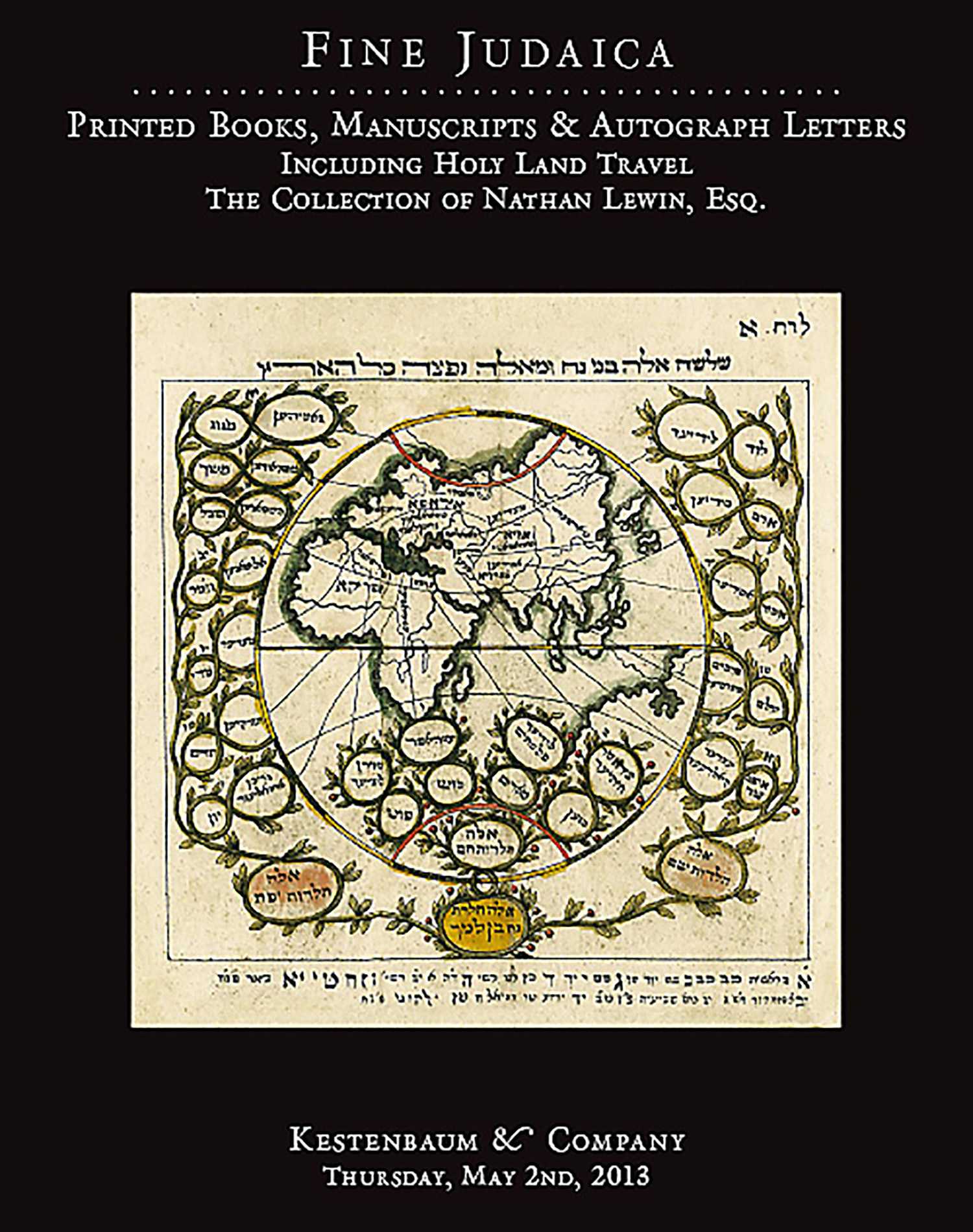Weinberg, Morris (Moshe). HaSepher Tehilim Kethivath Yad …This Book, the Psalms of King David, Written by Hand.

AUCTION 58 |
Thursday, May 02nd,
2013 at 1:00
Fine Judaica: Printed Books, Manuscripts and Autograph Letters
Lot 342
(AMERICAN JUDAICA).
Weinberg, Morris (Moshe). HaSepher Tehilim Kethivath Yad …This Book, the Psalms of King David, Written by Hand.
Chicago: 1910-12
Est: $70,000 - $90,000
PRICE REALIZED $70,000
<<An extraordinary American illuminated Hebrew manuscript accomplished in an exceptionally fine calligraphic hand, embellished with delightful folk illustrations throughout.>>
Provenance: Acquired by the consignor from the artist’s family. This manuscript has remained out of public view for a century.
The Hebrew calligraphic arts were far less developed in America in comparison to their sophisticated use in Europe. This Hebrew Book of Psalms created by Moshe Weinberg in Chicago is an outstanding and highly creative example. No doubt the best of its kind.
The artist was born in Kolne a village near Lomza, Poland in 1854. Before he migrated to the United States Weinberg received a solid Jewish education. This is abundantly clear by his insightful use of numerous creative illustrated vignettes within the body of the calligraphic Hebrew text that expand upon the understanding of the verses he created. It took the artist three years (1910-12) to accomplish this outstanding example of American-Jewish Folk Art comprised of numerous delightful illustrations.
One of the most notable features of this manuscript of calligraphic artistry is Weinberg’s extensive use of visual art throughout: At chapter headings, along margins, and embedded within individual words. Although all the illustrations are literal, they are clever, detailed and well executed. The artist includes everyday items - even household gadgets and modern inventions – as a way to explain the text, often in quite striking ways in the context of the Book of Psalms. For example, a suit of armor (to illustrate Chap. 5 verse 13), a beehive (19:11), a razor (52:4), an alarm-clock (55:18), an umbrella (62:9), a hot air balloon (139:8), etc. Certain pages contain more elaborate illustrations: A synagogue, a cemetery, a steam-ship, and many more. Certainly remarkable are the two divisional title-pages that prominently feature the Stars-and-Stripes, an abundantly clear testimony to the patriotic energy that Weinberg had for the United States and the religious freedom it gave him to produce this work of spiritual beauty.
Although nothing more is known of the artistry of Moshe (Morris) Weinberg, he published an edited facsimile of this manuscript in a much reduced format in 1912, omitting the original 1910 title page. See Y. Goldman, Hebrew Printing In America no. 24 (who makes no mention of the whereabouts of the original manuscript).
Also see Jewish Museum Catalogue, The Jewish Heritage in American Folk Art (1984) no. 90; and J. Ungerleider-Mayerson, Jewish Folk Art (1986) p. 34. - Both of which reproduce illustrations from the facsimile edition and not the original manuscript.
<<A magnificent manuscript of early 20th-century American Jewish Folk Art.>>
